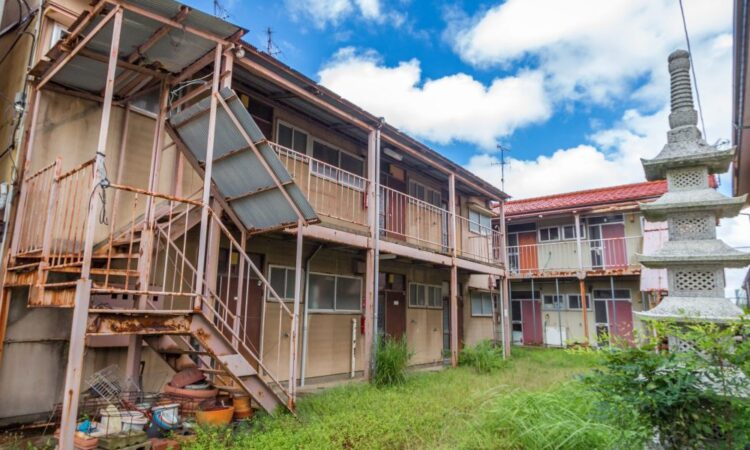
While the U.S. housing market has suffered from a lack of supply in recent years, the opposite is the case in Japan, where a shrinking population has sent the number of empty homes soaring.
Vacancies in that country have hit 8.99 million, according to data released by the Ministry of Internal Affairs and Communications on April 30. That’s an increase of 500,0000 from the prior survey in 2018 and an 80% surge from 20 years ago.
It also means a record 13.8% of homes in Japan are now vacant, with the share topping 20% in some rural areas where populations are falling faster.
That number includes second homes and others that are vacant for reasons that include the resident working temporarily elsewhere. But the number of abandoned homes also jumped, rising by 360,000 from the 2018 survey to 3.85 million today, or 5.9% of all homes.
Coincidentally, the U.S. Census Bureau also released similar data on April 30, and it reported that vacancy rates in the first quarter were 6.6% for rental housing and 0.8% for homeowner housing. Those were little changed from a year ago.
The vacancy rates from Japan are in line with an earlier report from the Nomura Research Institute, which predicted in 2017 that the vacancy rate could exceed 30.4% by 2033 if nothing is done about it.
“Having a third of houses vacant means that on average, each home would have a vacant house next door,” it warned.
So imagine three houses in a row with a vacant one in the middle, meaning the other two that are occupied are next to an empty house.
“Unoccupied houses become sites for trash dumping, are susceptible to collapse, and attract suspicious persons,” Nomura added. “Having 30% of houses vacant is certainly not desirable from the perspective of safety and disaster prevention.”
The best solution would be to increase Japan’s population or at least halt its decline, it said, while acknowledging that would be difficult and take a long time. The population has been in decline for years, and the most recent count in 2022 showed it shrank by more than 800,000 from the prior year to 125.4 million. Meanwhile, the birth rate has hit record lows, and the number of children has fallen for 43 consecutive years.
Other options include removing vacant homes, limiting the construction of new ones, and converting them to non-residential properties. The government has tried to tackle the problem by allowing local authorities to demolish homes at risk of collapse if improvements aren’t made or issue warnings to owners of mismanaged properties. But those efforts have seen limited success, according to Nikkei.
Tax policies also make it cheaper to keep some homes empty than to demolish them, and other properties are stuck in red tape when record-keeping snafus obscure ownership, experts told CNN.
Many foreigners see bargains to be had in Japan’s housing market, but the high costs of renovation and language barriers will likely prevent many from being sold that way.
“The truth is most of these homes are not going to be sold to foreigners, or that the amount of administrative work and the rules behind it [are] not something easy for somebody who doesn’t speak Japanese and read Japanese very well,” Jeffrey Hall, a lecturer at Kanda University of International Studies in Chiba, told CNN. “They’re not going to be able to get these houses for cheap.”
